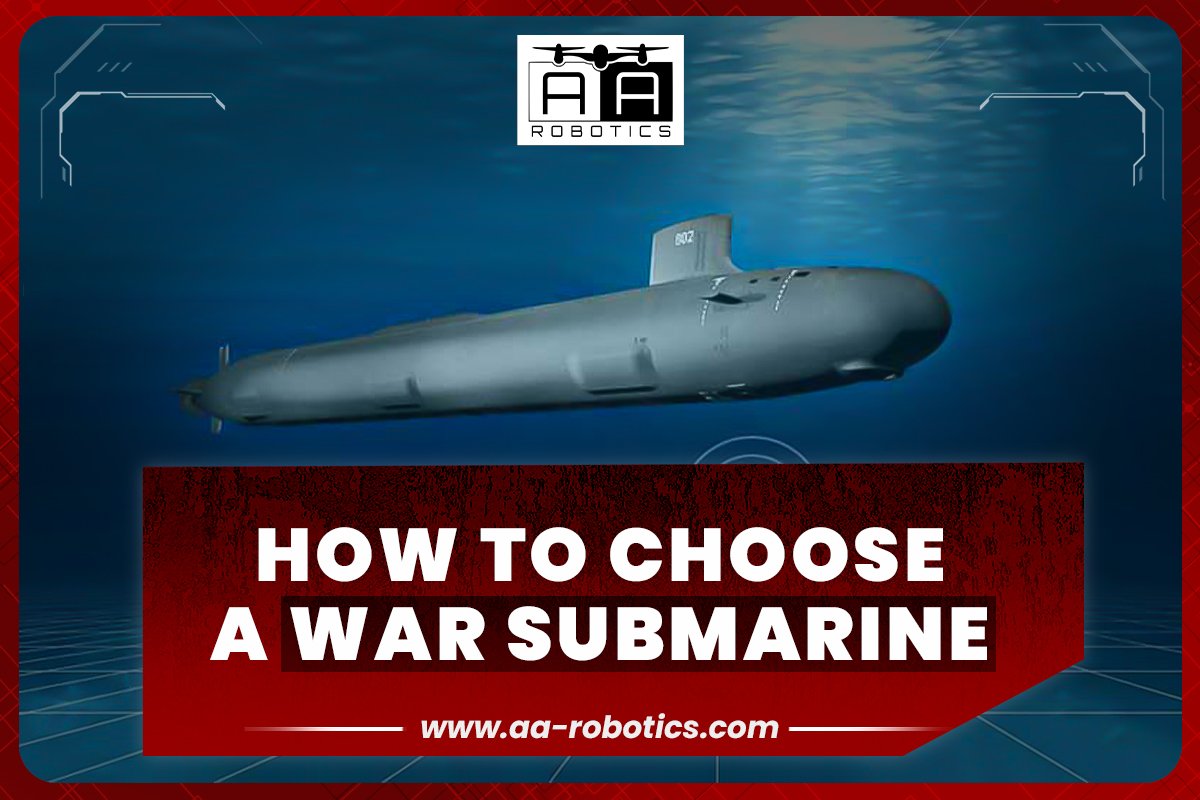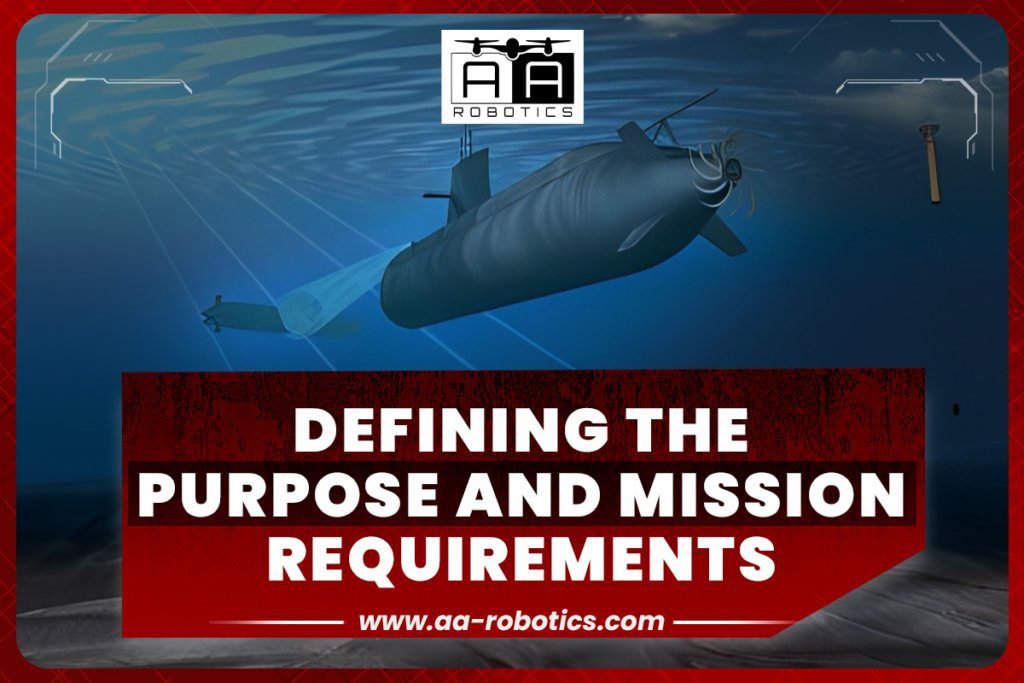
How to Choose a War Submarine
A war submarine is selected on multi-dimensional criteria, requiring strategic, operational, and technological assessment. Modern naval warfare cannot do without submarines due to their stealth, versatility, and ability to accomplish different kinds of missions. A good submarine may make all the difference for reconnaissance, deterrence, or combat missions at sea.
This guide by AA Robotics explores the key considerations in selecting the ideal war submarine with regard to features, technologies, and strategic factors that ensure its effectiveness in diverse operational scenarios.
Role of Submarines in Modern Warfare Strategies
Submarines are crucial in the increasing maritime security and power projection. Their value is that of undetectable operation, offering a plethora of capabilities beyond what traditional surface vessels can offer.
Below is how submarines are important for military strategy:
Stealth operations: Submarines can penetrate the waters completely stealthily, gathering intelligence or staying covertly prepared for surprise attacks.
Strategic Deterrent: Equipped with the latest arsenal, submarines act as a deterrent to the enemy. It provides a very crucial line of defence.
Flexibility in Missions: Submarines are versatile platforms capable of supporting reconnaissance, combat, and special operations.
Sustainability in Warfare: With extended operational endurance, submarines can remain deployed for prolonged periods, ensuring sustained presence in critical regions.
Understanding the strategic roles helps when a submarine is to be chosen because that defines what operations it needs to be successful.
Defining the Purpose and Mission Requirements

As an example, the primary purpose must be defined before the details of the submarine are presented. The mission requirements will outline the design, size, and capabilities of the vessel.
Some of the considerations for this are:
Offence vs. Defence: Depending on the offensive or defensive role, submarines can either be designed with high-tech arms or be designed for stealth and surveillance.
Combat or Support: Combat submarines are designed for immediate action, whereas support submarines may provide for rescue, logistics, or reconnaissance.
Duration of the Mission: Submarines designed for extended missions need greater endurance with regard to supplies and power.
It is important that these specifications define the strategic and tactical intent of the selected submarine.
Key Features to Evaluate in a Submarine
- Stealth and Acoustic Signatures
One of the main benefits offered by submarines is stealth. The acoustic signature should be very minimal for submarines to go undetected.
Noise Reduction: Advanced materials, propulsion technologies, and hull designs minimize detectable noise levels.
Electromagnetic Stealth: The coatings and designs help limit the submarine’s electromagnetic emissions, thus making it very difficult to detect.
Operational Depth: The possibility of operating deeper in the water enhances its stealth and survivability.
- Weapon Systems
A submarine’s offensive and defensive arsenal determines its effectiveness in combat. The type and configuration of weapons vary based on mission requirements.
Torpedoes and Missiles: Modern submarines typically mount a combination of torpedoes for undersea combat and cruise missiles to attack the enemy surface ships.
Mine-laying Capability: Submarines designed with mine-laying may, in turn, hamper enemy operations.
Anti-Submarine Warfare (ASW): Systems that can oppose an enemy submarine provide better options for tactical manoeuvre.
- Power Plants
The power plants, one of the core technologies, determine speed, endurance, and stealth.
Diesel-Electric Systems: They are apt for shorter missions, but in the submerged state, the power is drawn from a battery, which reduces the noise.
Nuclear Propulsion: They are apt for longer missions since they draw unlimited range and consistent power.
Air Independent Propulsion: It balances stealth and endurance in that submarines can operate underwater for long periods and not surface.
- Communication and Navigation
Today, advanced systems have come into place to make situational awareness and operational accuracy.
Sonar Systems: The arrays detect underwater and surface threats and then activate active and passive sonars.
Integrated Communication Systems: Ensure coordination with naval fleets and command centres via secured channels.
Advanced Navigation Tools: GPS, inertial navigation systems, and underwater mapping tools aid manoeuvrability and improve operational safety.
- Durability and Survivability
They need to withstand underwater environments but stay operationally efficient.
Pressure-Resistant Hulls: High-strength materials such as titanium or special steel ensure resilience at great depths.
Redundancy Systems: Backup power, life support, and propulsion systems enhance survivability during emergencies.
Technological Innovations in the Design of Submarines
AI enhances decision-making capabilities by automating critical functions such as threat detection, target prioritization, and system diagnostics. It also reduces the crew workload so that personnel have ample time to focus on mission-critical tasks, making them more efficient and precise.
- Artificial Integration/Intelligence
Artificial intelligence promotes quality decisions by automating central processes such as threat identification, prioritized target ID, and system diagnosis.
- Sovereign Underwater Vehicles
Submarines with AUVs can expand their functions to include remote reconnaissance and surveillance.
- Cybersecurity
Given the increasing nature of warfare using digital components, submarines will need to be prepared to deter hacking and data breaches.
Operational Environment Considerations
The geographical and operational environments in which the submarine is to be deployed significantly impact its design and functionality.
- Deep Ocean Operations
Require high-strength, pressure-resistant materials and sophisticated propulsion systems for long-endurance missions.
- Coastal and Shallow Waters
Benefit from compact designs and manoeuvrability, along with increased stealth capabilities to navigate constricted environments.
- Climatic Adaptations
Cold-water operations require specific insulation and thermal management systems. Tropical environments may require sophisticated cooling systems for peak performance.
Lifecycle Costing Evaluation
While the acquisition cost for a submarine is significant, owning one involves the total sum of maintenance, upgrades, and operational costs.
- Maintenance Needs
The submarine would be kept in a position to be combat-ready when needed.
- Upgrade Capability
Modular designs allow for easy future upgrades to meet the higher standards of technology.
- Crew Education
Investment in education equips personnel to operate a submarine effectively.
Strategic Alliances and Vendor Options
Selecting the best manufacturer or vendor is what will ensure a submarine will be reliable and high performance.
- Reputation and Experience
Companies with a history of supplying military-grade submarines.
- Customization Options
The ability of the vendor to tailor the submarine to a customer’s specific operational requirement.
- After-Sales Support
Technical support, availability of spare parts, and upgrading software.
Submarine Selection Challenges
- High-Speed Technological Advancements
Technologies in submarines change fast, so selecting a platform that can change and adapt to future advancements is important.
- Cost Capability Trade-Off
Ensure that the submarine meets operational needs and stays within budget constraints.
- Seamless Integration into the Existing Naval Assets
It should be integrated smoothly with other vessels, aircraft, and command systems in the navy for effective operation.
Conclusion
The selection of the right war submarine is a critical decision that requires deep understanding of the operational needs, design features, and technological advancements. As highlighted, modern submarines need to balance stealth, durability, weaponry, and cutting-edge technology to remain effective in ever-changing defence scenarios.The firm at AA Robotics takes pride in delivering military-grade underwater robots designed to meet unique challenges in maritime defence. These advanced underwater surveillance systems and innovative autonomous technologies help improve operational efficiency, adaptability, and safety. With a commitment to excellence, AA Robotics stands as your trusted partner to navigate the complexities of modern naval operations.
The major purpose of a war submarine is to undertake tasks like surveillance, reconnaissance, and strategic attacks while still retaining stealth and operational flexibility in maritime defence missions.
AA Robotics offers cutting-edge sea products such as state-of-the-art underwater surveillance systems, autonomous vehicles, and AI-powered navigation solutions that upgrade the potential of modern submarines.
Consider stealth factors, weapon systems, endurance, crew comfort, and ability to adapt to different types of missions. It is equally important to assess the innovative technologies incorporated into the design.
Autonomous submarines are increasingly prominent because they can accomplish missions without human intervention directly, providing greater stealth, efficiency, and reduced risk to crew members.
Cybersecurity is very important in modern submarines because it protects sensitive data and prevents hacking attempts, ensuring the integrity and effectiveness of naval operations.


